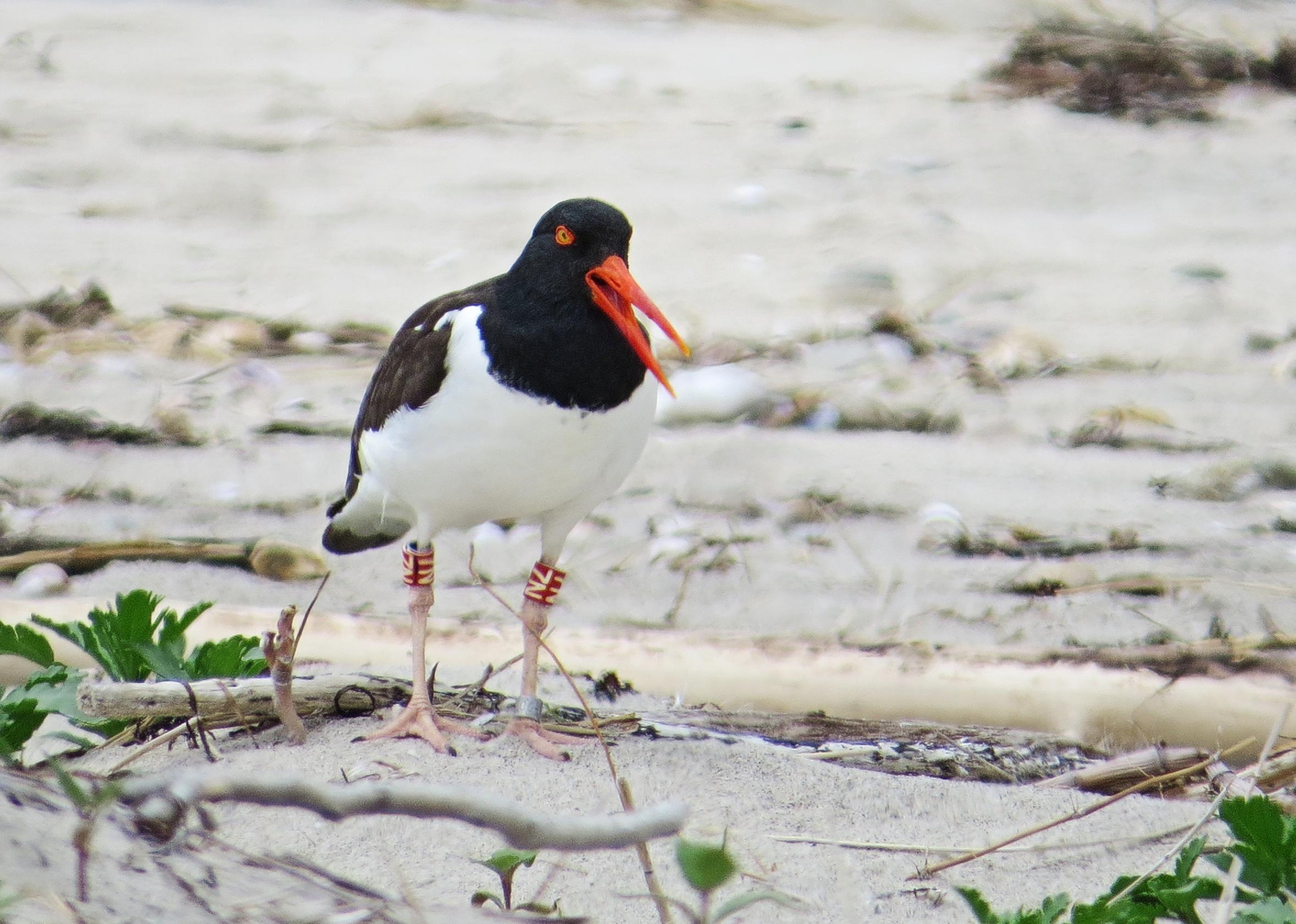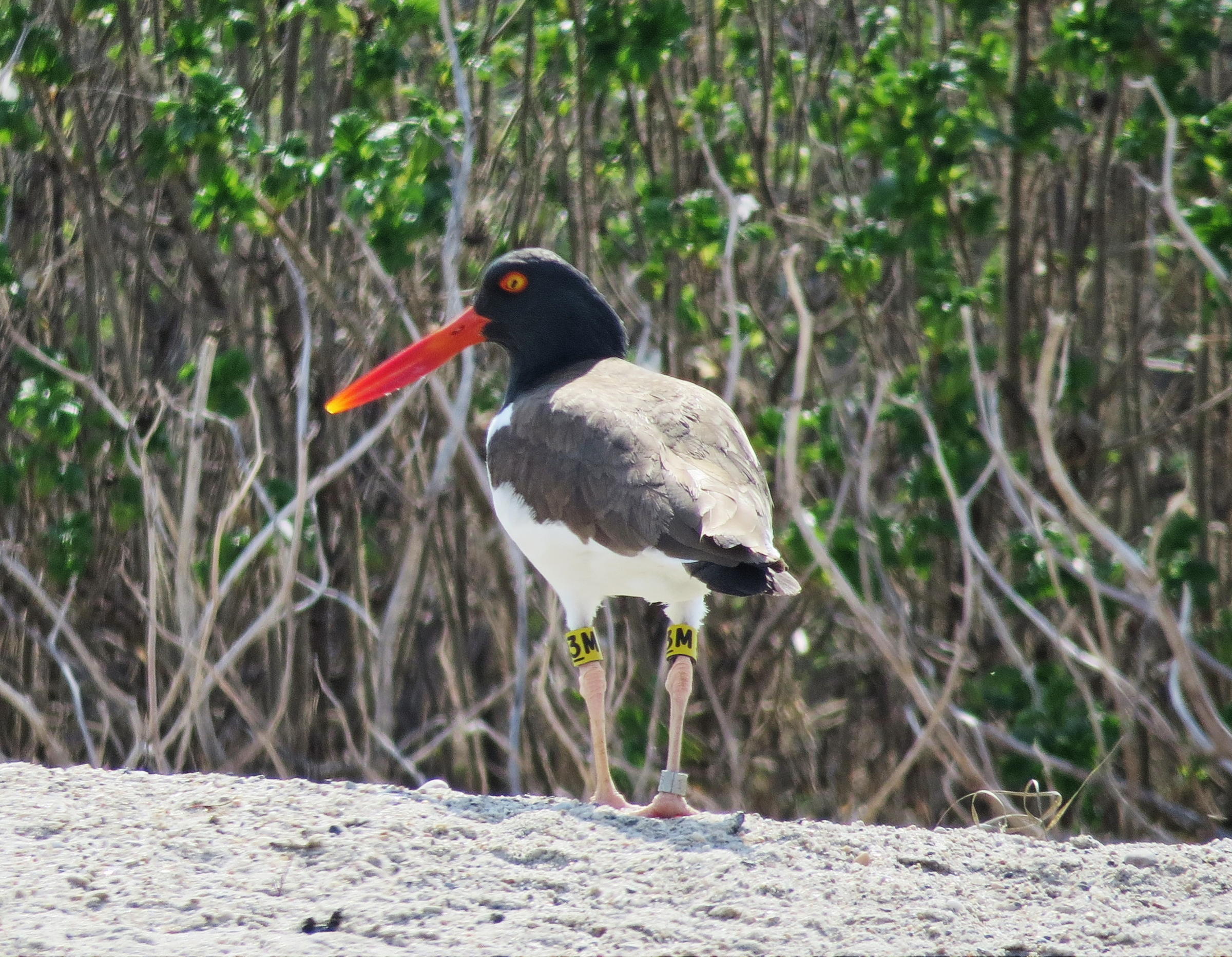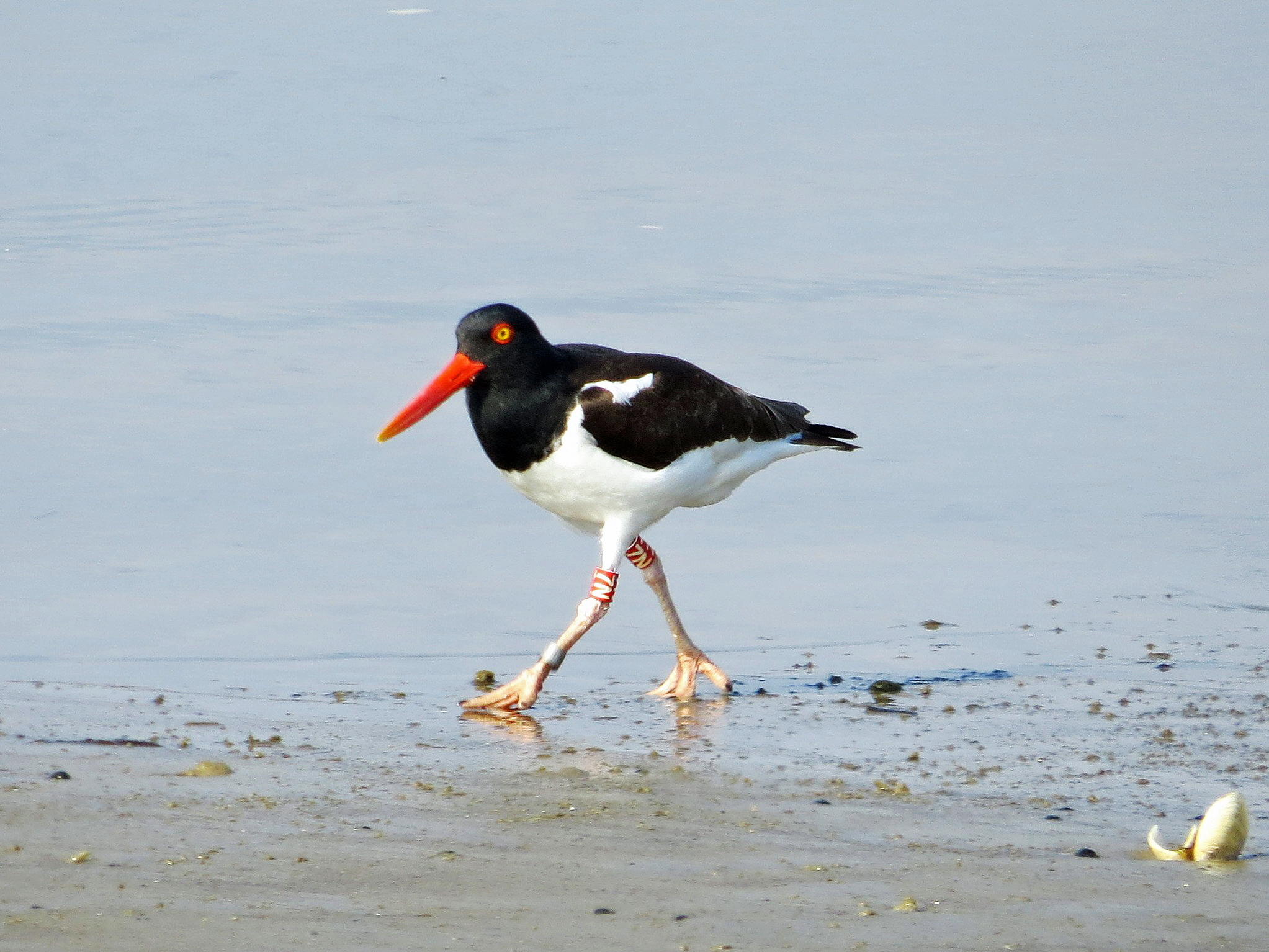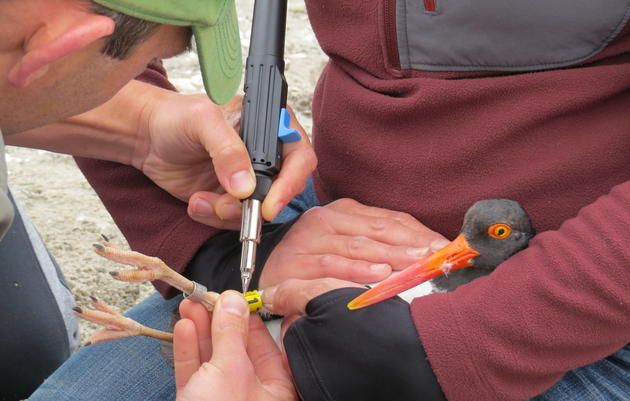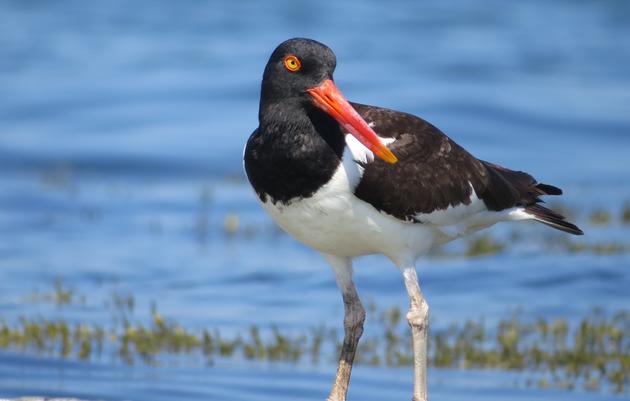The secret to a successful marriage as proven by American Oystercatchers Red 7N and Yellow 3M? Time apart.
During the spring and summer months, Connecticut’s beaches are inhabited by breeding and nesting shorebirds, many of which have migrated hundreds of miles from their southern wintering grounds. The American Oystercatcher is one of these birds, which makes them an ideal species to track and learn from.
Bird banding is one important technique used by Audubon and other conservation organizations to monitor population numbers and migratory routes of threatened bird species like the American Oystercatcher. The bands, and subsequent re-sightings, offer us a unique glimpse into the lives of individual birds.
“Sometimes, bird couples just need a break.”
Two of our favorite banded birds to follow are Red 7N and Yellow 3M – an American Oystercatcher pair that has nested in Connecticut every year since 2012. Over the past eight breeding seasons the pair has nested in the same territory and successfully fledged a total of six chicks.
Although these two oystercatchers may appear to be inseparable, their bands tell a different story.
Oystercatcher Red 7N was banded in October 2010 on Little Egg Island Bar in Georgia and was first observed breeding in May of 2012 on an island off of Stonington, CT. Red 7N’s mate was banded at that time and officially became known as Yellow 3M.
While the pair returns to the same island to nest every year, each fall the two birds go their separate ways for the winter.
Red 7N heads down to Georgia and spends the winters on the islands in Altamah and Doboy Sound along the central Georgian coast, whereas Yellow 3M overwinters on the islands in Cedar Keys National Wildlife Refuge off the northwest coast of Florida in the Gulf. Come spring the pair reunites at a staging area* on Napa Tree Point in Westerly, RI, before heading to their special breeding and nesting island. This may be look like “summer love,” but we say eight years strong is more than just a fling!
Re-sight data obtained from American Oystercatcher Working Group database (AMOYWG.org)
*Oystercatchers will congregate in large groups in the spring before nesting season begins and once nesting season ends, before embarking on their migration.
To learn more about American Oystercatcher banding and how to identify a band and report a sighting, visit amoywg.org/banding-re-sighting.



